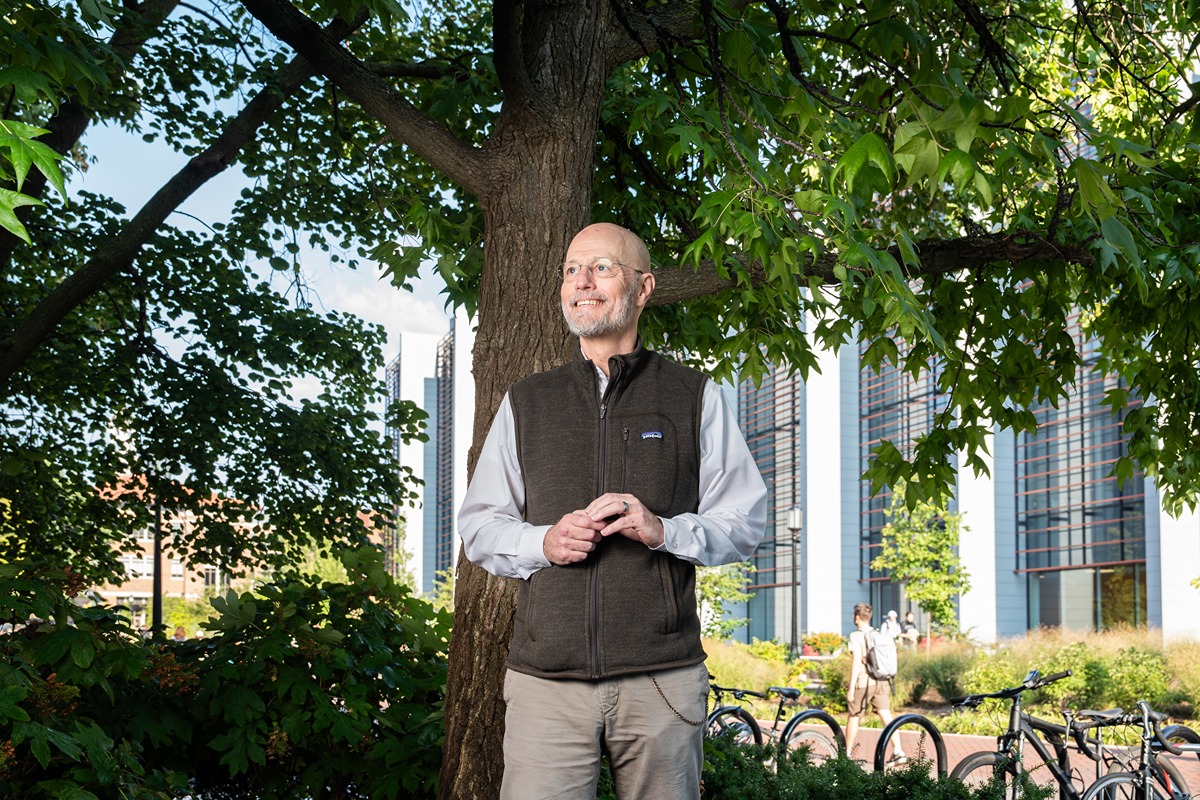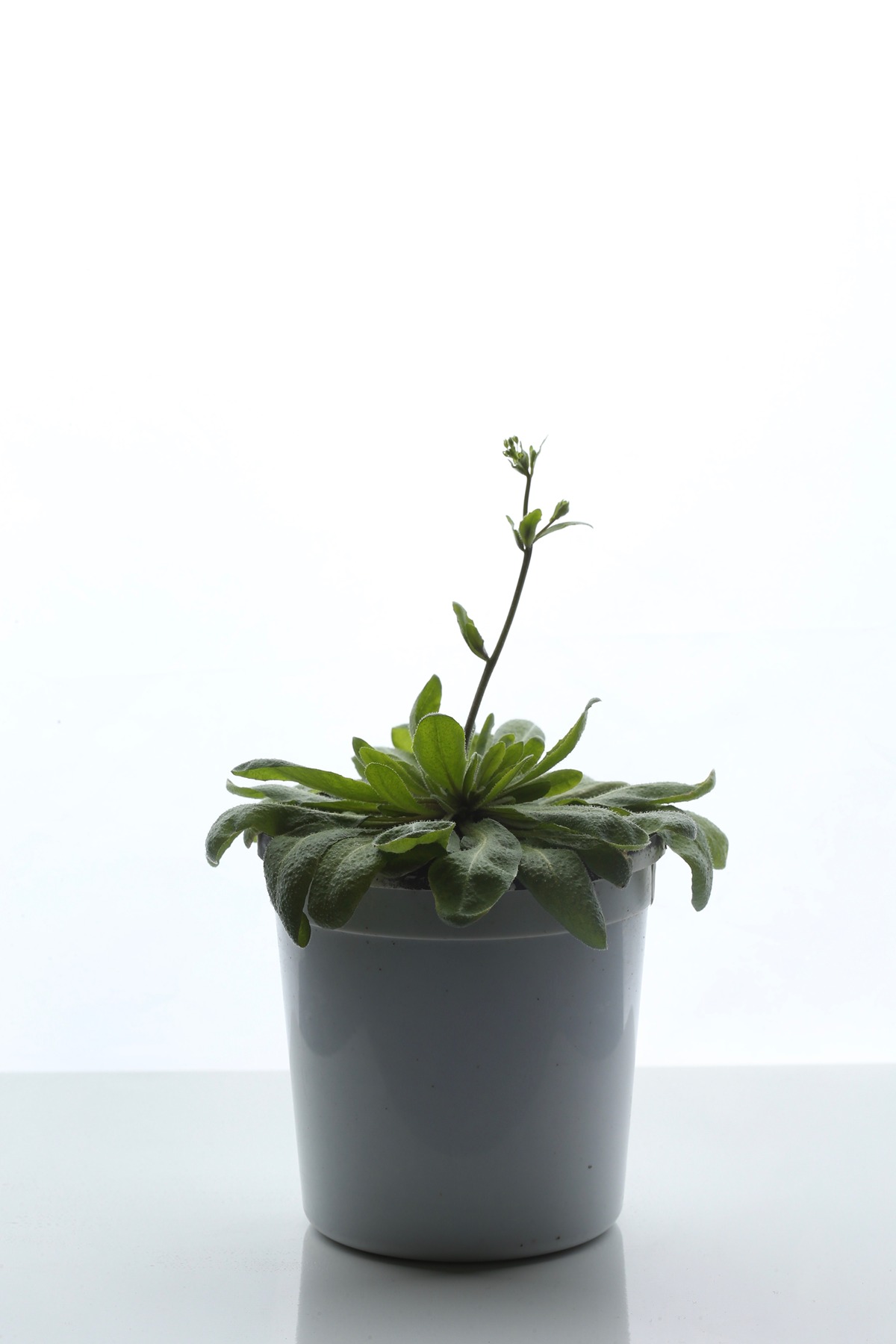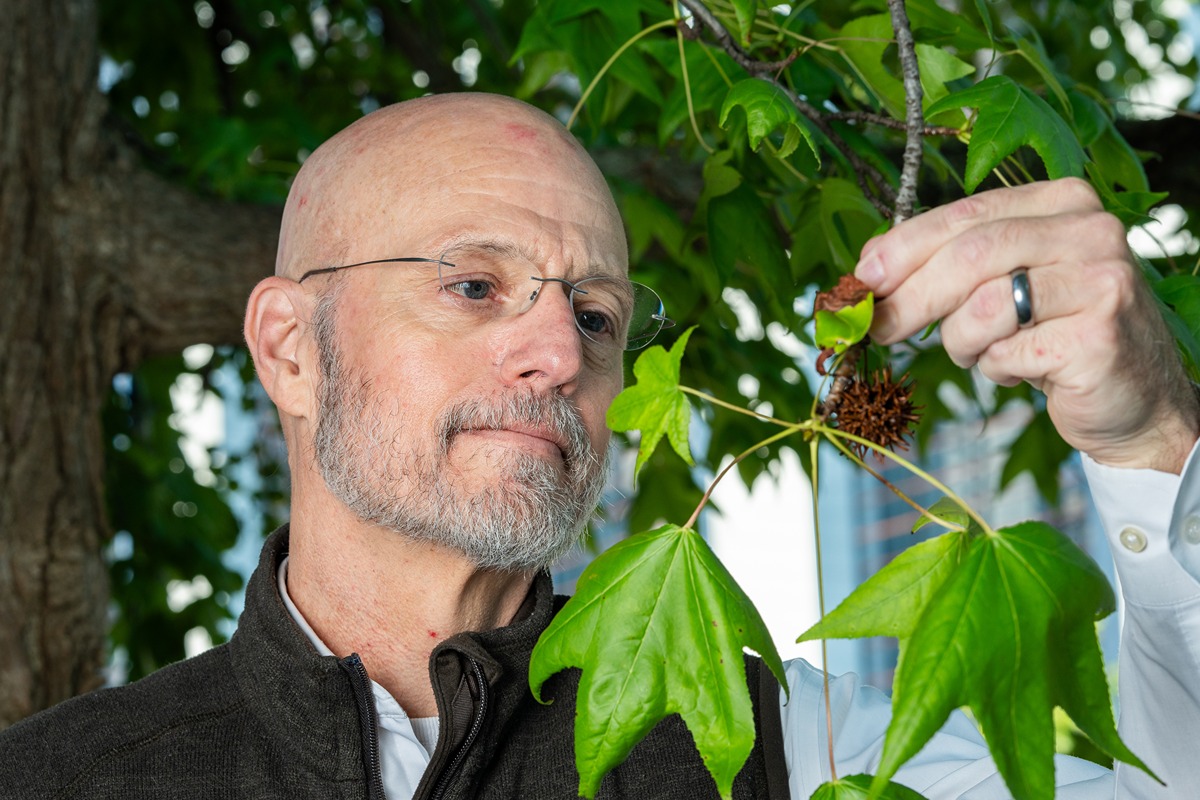Purdue and NASA scientists plant the seeds for lunar agriculture
Millions of people watched the National Aeronautics and Space Administration (NASA)’s Apollo 11 launch on July 16, 1969. Marshall Porterfield, of Purdue’s agricultural and biological engineering and horticulture and landscape architecture departments, three-years old at the time, remembers running from his family’s television set to the backyard of their Florida home. His mother lifted him up to see the orange-and-red flames arc in the sky as the Saturn V rocket took three astronauts to the moon.
As a boy, Porterfield was influenced by viewing the Apollo rocket launches, an opportunity that came with being part of a military family stationed at a naval base nearby NASA’s Kennedy Space Center. Science fiction and television also sparked his fascination with space. The original Star Trek series hooked him as a young child, and later, during his undergraduate studies, an episode of Star Trek: The Next Generation depicting hydroponics in space inspired Porterfield to his calling.
 As a kid, Marshall Porterfield was inspired by the Apollo missions. His later research career in space included working on some of the earliest plant growth experiments in the shuttle era. Here he is photographed with one of “Purdue’s Space Gum Trees” that were germinated in space by Purdue astronaut Charles Walker in 1984 aboard the space shuttle Discovery.
As a kid, Marshall Porterfield was inspired by the Apollo missions. His later research career in space included working on some of the earliest plant growth experiments in the shuttle era. Here he is photographed with one of “Purdue’s Space Gum Trees” that were germinated in space by Purdue astronaut Charles Walker in 1984 aboard the space shuttle Discovery. Porterfield’s work with NASA began while he was in graduate school. He earned a fellowship with the agency and studied in Mary Musgrave’s space biology program at Louisiana State University and the Kennedy Space Center. Joining Musgrave on NASA’s CHROMEX-03, 04 and 05 experiments, Porterfield  studied how space affected the root environment of Arabidopsis thaliana, a fast-growing mustard relative that’s native to Africa and Eurasia.
studied how space affected the root environment of Arabidopsis thaliana, a fast-growing mustard relative that’s native to Africa and Eurasia.
As a current professor of biological engineering and space biophysics at Purdue University, Porterfield’s collaboration with NASA has only grown. From 2012 to 2015, Porterfield served as director of NASA's Space Life and Physical Sciences Research and Applications Division.
He recently began work for NASA’s Artemis missions that aim to send astronauts back to the moon to create a path to Mars and further. Porterfield will be helping build a new plant growth experiment for the Artemis III lunar mission, currently set for launch in 2026. In collaboration with Christine Escobar of Space Lab Technologies, LLC, the principal investigator for NASA’s Lunar Effects on Agricultural Flora (LEAF) instrument, Porterfield and his lab are preparing to send plants to the moon.
Star Trek and Porterfield are far from the first to bring agriculture into conversations about space travel. In the late 1800s, Konstantine Tsilokovski, a Russian scientist, mathematician and writer, wrote about the importance of including plants in the architecture of space exploration. What would humanity do without the food, the oxygen, the materials for clothes and shelter that plants provide?
Porterfield says, “If we can solve the logistics problem of human commodities for life, we can greatly reduce the cost and limitations to deep-space human exploration.”
What plants will be taken to the moon?
If cleared to fly, LEAF will include three different plant species aboard SpaceX’s Starship lander, tucked away as seeds in a growth chamber. Once the Artemis III crew lands on the moon, they’ll place the automated chamber on the lunar surface and activate water flow to start the plants’ growth.
Arabidopsis thaliana, that same plant which Porterfield previously studied, will be aboard this flight. Not only is this an important research tool for Porterfield’s work, but Arabidopsis is considered the model species for most plant science research, chosen for its rapid growth, ability to self-pollinate and relatively small genome.
Rapid Cycling Brassica rapa, or the Wisconsin fast plant, might be one of the few plants that beats Arabidopsis in terms of quick growth. Also a relative of mustard, the Wisconsin fast plant can produce seeds in 40 days under constant light. This makes it a powerful research tool for space expeditions, where the crew might only be on the moon for one or two weeks.
Genus Wolffia, commonly known as watermeal duckweed, is the sole aquatic plant planned for the Artemis III mission. A common resident of ponds and fish tanks alike, the plant floats on the surface of the water with a few small fronds.
Porterfield explains why duckweed is important for the future of space. “It grows fast and has high nutritional content. It could be a food source, and it also filters water, so it could eventually help treat wastewater on future missions.”
As the mission ends, the crew will “fix” some of the plant samples for genetic analysis, preserving them chemically before taking them back to Earth. Some plants, however, will remain in the growth chamber on the moon, where the LEAF team will watch them through a camera inside the experiment to continue monitoring their growth for as long as possible.
How might plants be impacted by radiation?
Radiation on the moon has two sources: solar radiation and deep space radiation. Solar radiation, or solar light, comes from mass ejections of plasma and magnetic field from the sun’s atmosphere. Deep-space radiation comes from high energy x-rays and gamma rays released from stars across the cosmos.
The Earth’s atmosphere typically shields humankind from this radiation that can significantly damage DNA and cells. Porterfield says without its protection in space, “astronauts are more exposed to solar winds and the radiation from them. The International Space Station (ISS) operates within the geomagnetic shielding of the Van Allen belts in a highly reduced radiation environment, as compared to deep space.”
Only 24 astronauts have ever been exposed to deep-space radiation, and these are the Apollo crew who flew on the Saturn V in the lunar exploration program that ended in the early 1970s—over 50 years ago. Despite precautions taken in shielding material in their suits, a recent study of those 24 astronauts revealed they have six times the rate of heart disease than astronauts that spend six months on the ISS.
NASA has flown plants in microgravity on space shuttles and the ISS but has never attempted to grow plants on the moon before. The LEAF project will be the first to collect data on how this phenomenon affects them. It will also be the first to return plant material grown on the moon to Earth.
“The growth chamber will protect the plants from sunlight. They’ll be grown under LED lights. But we’re intentionally letting them be exposed to deep space radiation,” Porterfield says.
Seeing how plants react and grow under these extremes could provide answers on how to best protect future plants grown on the moon. What’s more, they could offer solutions to better protect astronauts on these longer missions.
As Porterfield points out, “What we can learn regarding cellular-level damage in a plant will be directly applicable to humans.”
How might lunar gravity impact plant growth?
When you breathe outside on a cold winter day, you can see your breath rise up like steam away from you. Even in warm weather when you can’t see it, your exhaled breath pushes up and away from you.
On Earth, gravity drives air-circulation patterns through “buoyant convective flow.” Simply put, this means that hot air rises and cold air sinks. The body heat humans produce creates a constant upward airflow around them, conveniently washing the exhaled carbon dioxide up, circulating it away from our faces to provide plenty of fresh oxygen.
Astronauts are challenged by reduced gravity, or microgravity in space and one-sixth gravity on the moon. Without the pull of Earth’s gravity to separate heavier cold air from lighter warm air, Porterfield’s recent research suggests that buoyancy convection flow does not happen. Instead of their body heat circulating the air around them, astronauts become surrounded by a stagnant layer. Their exhaled carbon dioxide lingers in front of them, where they might easily inhale it again.
Porterfield is now using computational biophysics for simulations to help NASA fully understand how these gravity-dependent airflow patterns impact respiratory gas exchange around astronauts. This work influences how spacecraft environments are engineered for the most efficient ventilation for humans in space. This solution is based on Porterfield’s work studying plant growth and reproduction in the CHROMEX spaceflight experiments. The Arabidopsis roots in space acted as if they were flooded, like the soil had become too waterlogged for them to take up the oxygen they need for metabolic reactions.
Like humans, plants rely on these predictable air movements. Without gravity, these flow patterns are replaced with thick, stagnant diffusion boundary layers around the leaves. In normal conditions on earth, these boundary layers are thin enough for plants to take up carbon dioxide that they use for photosynthesis and release oxygen. A lack of buoyant airflow in space can mean less gas exchange, and thus less photosynthesis and growth in plants.
“Plant productivity may be a critical factor limiting the range and duration for the future of deep-space human exploration and habitation,” Porterfield says. “The National Academy of Sciences recently released a series of recommendations, calling on NASA to invest in programs in bioregenerative life support system technology for the future of deep-space habitation. The NASA LEAF payload is now being developed for the Artemis III mission to study these phenomena in one-sixth gravity on the moon.”
The LEAF growth chamber is equipped with an air circulation system, much like the air conditioning for a building. Fans will provide mechanical convection to overcome microgravity-induced stagnant boundary layers, which should allow the plants to exchange gas and water with the air like they do on Earth. The LEAF scientists also have the option to turn that off and see how plants respond to the lack of airflow in microgravity. Porterfield looks forward to observing changes in their growth, photosynthetic rates and atmospheric content.
The end goal:
Not only is the LEAF project the first step towards creating ecological life support for American astronauts, but it also has the potential to answer questions for the future of the blue planet.
Space exploration has always pushed the boundaries of what humans are capable of and the LEAF project continues that legacy. Although the team will be studying space and the lunar environment, the results could advance bioregenerative agriculture, or the self-sufficient and sustainable methods of growing food and materials. The environmental technologies created for space may also prove useful on Earth in the face of climate change.
“Studying biology in space gives us answers to enable humans to live and work at the frontiers of human space exploration,” Porterfield says. “Studying lunar gravity and radiation effects on plants is a critical step in developing bioregenerative life support for sustainable human habitats, both on and off planet. What we learn will open the doors for future generations to preserve the Earth and live in space.”











